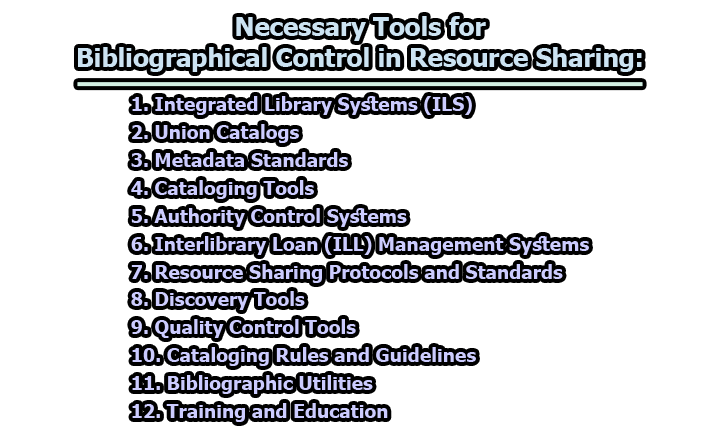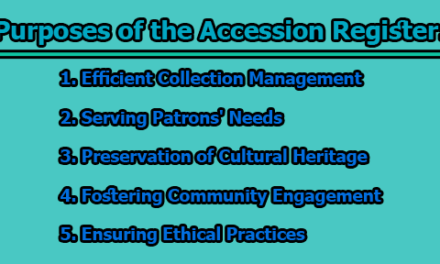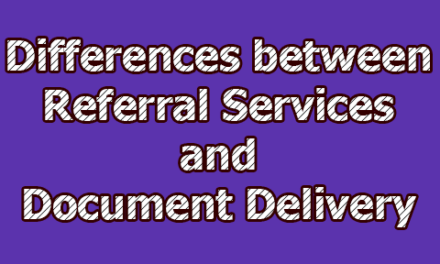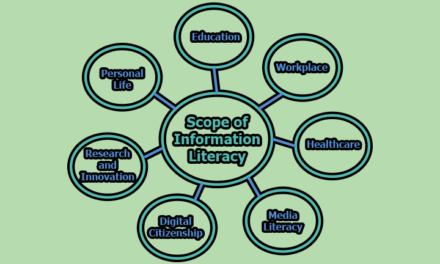Necessary Tools for Bibliographical Control in Resource Sharing:
Bibliographical control in resource sharing is essential for efficiently managing and sharing library materials among institutions and users. Several tools and systems support bibliographical control, ensuring that bibliographic records, cataloging, and metadata are accurate and consistent. Here are some necessary tools for bibliographical control in resource sharing:
- Integrated Library Systems (ILS):
- Integrated Library Systems serve as the central hub for library operations. They encompass several modules, including cataloging, circulation, acquisitions, and more.
- The cataloging module allows librarians to create and manage bibliographic records for library materials. Catalogers input data such as title, author, publication date, and subject headings, ensuring each item is accurately described.
- ILSs also enable the creation of item records, which provide details about individual copies of materials, their location within the library, and their circulation status.
- By maintaining bibliographical control through ILSs, libraries can efficiently organize their collections, track materials, and provide accurate information to users.
- Union Catalogs:
- Union catalogs play a crucial role in resource sharing by aggregating bibliographic records from multiple libraries or institutions into a unified database.
- These catalogs facilitate resource discovery, as users can search for materials across a wide range of participating libraries through a single interface.
- Depending on their scope, union catalogs can cover materials at the local, regional, national, or global level. National union catalogs, like the Library of Congress catalog, serve as valuable resources for researchers worldwide.
- Metadata Standards:
- Metadata standards provide a structured framework for describing library resources. The MARC (Machine-Readable Cataloging) format is one of the most widely used standards for bibliographic control.
- MARC defines specific data elements, encoding schemes, and tags for cataloging records. It ensures uniformity in how bibliographic information is structured, making it easier for libraries to exchange and share data.
- Libraries adhere to MARC standards when creating and editing bibliographic records. Other metadata standards like Dublin Core or MODS are employed for different types of materials, such as digital resources or archival collections.
- Cataloging Tools: Cataloging tools offer a range of features to aid catalogers in creating high-quality bibliographic records:
- Data Entry and Editing: These tools provide user-friendly interfaces for inputting and editing cataloging data, including automated look-up features for retrieving standardized information.
- Validation and Compliance: They enforce cataloging rules and standards to ensure that records are consistent and compliant with established guidelines.
- Integration: Many cataloging tools integrate seamlessly with ILSs, allowing for real-time updates and efficient record management.
- Authority Control Systems:
- Authority control systems are vital for maintaining consistency in the way names, subjects, and uniform titles are represented in bibliographic records.
- They maintain authority records that serve as reference points for establishing standardized forms of access points, preventing variations in headings and ensuring accurate cataloging.
- These systems are especially crucial for managing authority control for personal names, corporate entities, and subject headings.
- Interlibrary Loan (ILL) Management Systems:
- ILL management systems are closely integrated with bibliographical control tools to facilitate resource sharing.
- They enable libraries to handle requests for materials not available in their own collections, borrowing materials from other institutions and lending their own resources to patrons at distant libraries.
- These systems maintain transactional data, including borrowing and lending history, due dates, and user information, streamlining the ILL process.
- Resource Sharing Protocols and Standards:
- Protocols like Z39.50 and standards like OAI-PMH facilitate interoperability between library systems and resource sharing networks.
- 50 allows for searching and retrieval of bibliographic data across different systems, making it possible for libraries to share records seamlessly.
- OAI-PMH enables the harvesting of metadata from digital repositories, enhancing the accessibility of digital resources in resource sharing contexts.
- Discovery Tools:
- Discovery tools are user-facing interfaces that connect users to cataloged materials and bibliographic records.
- They offer sophisticated search capabilities, including keyword searching, faceted searching, and relevancy ranking, making it easier for users to find relevant resources.
- These tools bridge the gap between users and bibliographical control systems, ensuring that library materials are discoverable and accessible.
- Quality Control Tools:
- Quality control tools are essential for maintaining the accuracy and consistency of bibliographic records.
- They encompass data validation and verification software that scans records for errors, inconsistencies, or missing information.
- By identifying and rectifying these issues, quality control tools ensure that cataloging data is of the highest quality, enhancing user satisfaction and trust in the library’s resources.
- Cataloging Rules and Guidelines:
- Catalogers adhere to established cataloging rules and guidelines, such as RDA (Resource Description and Access) or AACR2 (Anglo-American Cataloging Rules).
- These rules provide detailed instructions on how to create bibliographic records, including elements like descriptive data, access points, and subject headings.
- Following cataloging rules ensures that records are standardized, facilitating resource discovery and retrieval.
- Bibliographic Utilities:
- Bibliographic utilities like OCLC provide valuable cataloging and bibliographical control services to libraries.
- Libraries can access shared cataloging records maintained by these utilities, significantly reducing duplicate cataloging efforts.
- These utilities contribute to the creation and maintenance of union catalogs and support resource sharing initiatives on a large scale.
- Training and Education:
- Training and education are essential for library staff, particularly catalogers, to stay updated on cataloging standards, metadata practices, and bibliographical control techniques.
- Training programs may include workshops, webinars, and courses on topics like MARC cataloging, authority control, and metadata management.
- Well-trained staff ensures that bibliographic records are created and maintained according to industry best practices, resulting in high-quality and reliable cataloging data.
In conclusion, bibliographical control tools and systems are fundamental for maintaining accurate, consistent, and accessible bibliographic records across libraries and resource sharing networks. These tools support efficient resource sharing, enhance user discovery, and contribute to the overall effectiveness of library services.

Library Lecturer at Nurul Amin Degree College










